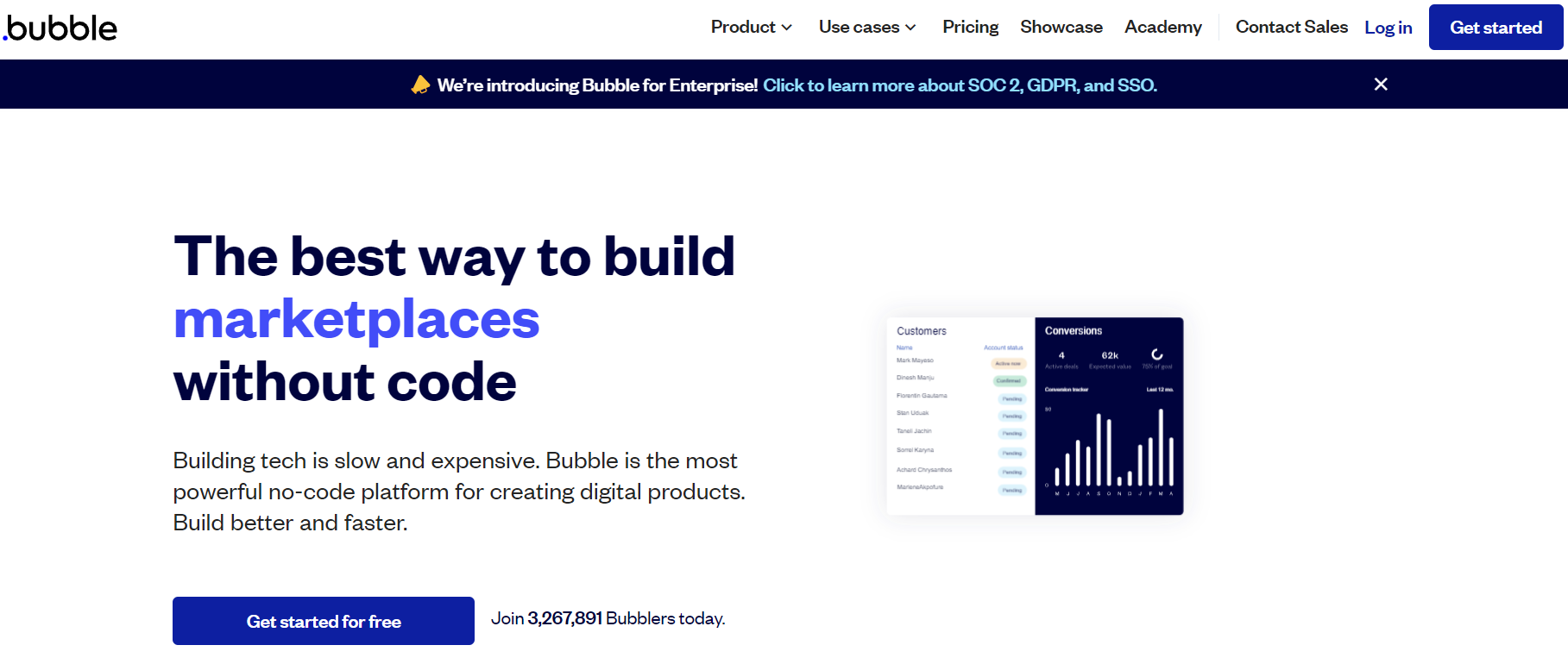Understanding Low-code and No-code Platforms

As a forward-thinking entrepreneur, the success of your business might hinge on automation and technology no matter your market and business model. However, while no-code and low-code platforms offer promising avenues for simpler tasks such as accessing data differently or rapid prototyping, they might not be the silver bullet for all your developmental needs, especially for startups and groundbreaking products. In this article, we will delve deeper into these platforms and underscore their strengths and constraints.
Decoding the Concept
Low-code and no-code platforms stand as innovative software tools designed to empower users to create applications with minimal or no need for manual code writing. These platforms leverage intuitive visual interfaces, drag-and-drop components, pre-built templates, and seamless integrations to simplify the app development journey. Despite these common traits, they have some differences in terms of who can use them, what they can do, and how they work.
A Key Distinction
The primary divergence between low-code and no-code platforms lies in their approach toward code utilization and integration. Low-code platforms offer a degree of flexibility for code customization and seamless integration, enabling users to infuse their applications with personalized functionalities. On the other hand, no-code platforms exclusively rely on visual interfaces and pre-established templates, eliminating the necessity for direct code involvement. They both are very distinct and have their pros and cons.
When They Shine
Low-code and no-code platforms can be advantageous when:
- Prototyping ideas swiftly
- Accessing and visualizing existing data in novel ways
- Empowering non-technical users to experiment with app creation
- Achieving short-term cost-effectiveness
However, for startups aiming to build innovative products or services, the constraints of these platforms can become apparent. In such scenarios, full platforms and real code remain the gold standard.
Examples of Top-tier Platforms on the Market
In order to provide you with a comprehensive understanding of these platforms, let’s delve into the distinctive features and capabilities offered by some of the top-tier low-code and no-code solutions. It’s essential to bear in mind that your specific business requirements will ultimately guide your selection of the most suitable tool. You can connect with us to help you find the right solution for your business. At NuBinary, we have a large CTO network globally with a diverse portfolio of expertise. Most of the partners at NuBinary have either had successful exits and some have built unicorn companies in North America. Our team can accelerate your startup with scalable MVP tied to your company goals with senior technical leadership.
Now, let’s dive in!
Comparison Table of Low-code and No-code Platforms
|
Platform |
Type |
Features |
Capabilities |
|
Appian
|
Low-code |
Business process management, Case management, Data integration, AI services |
Build enterprise apps for web and mobile devices |
|
Mendix |
Low-code |
Visual modeling tools, Collaboration features, Integrations, Cloud-native architecture, Multi-channel delivery, AI-assisted development |
Build enterprise apps for web and mobile devices |
|
OutSystems |
Low-code |
Visual development tools, Reusable components, Integrations, Cloud deployment, DevOps, Security |
Build web and mobile apps for any device |
|
Pega |
Low-code |
Visual development tools, Case management features, Integrations, Cloud hosting, AI services, Automation |
Build enterprise apps for business processes and workflows |
|
Quickbase |
Low-code |
Drag and drop components, Workflows, Data management, Cloud hosting, Data integration, Automation |
Build custom apps for business processes, workflows, and data management |
|
Zoho Creator |
Low-code /No-code |
Drag and drop components, Workflows, Integrations, Cloud hosting, Mobile access, Offline mode |
Build applications for web and mobile devices |
|
AppSheet |
No-code |
Pre-built templates, Connectors, Components, AI, Automation, Security |
Build apps for web and mobile devices using data sources such as spreadsheets and databases |
|
Microsoft Power Apps |
No-code /Low-code |
Pre-built templates, Connectors, Components, Integrations with Microsoft 365, Azure, and Dynamics 365 |
Build apps for web and mobile devices using data sources such as Excel and SharePoint |
|
Webflow |
No-code |
Drag and drop components, Templates, CMS, Hosting, SEO tools |
Build responsive websites without coding |
|
Bubble.io |
No-code |
Drag and drop components, Database integrations, User authentication, API integration, Hosting, Plugins |
Build build web applications without writing code |
1. Appian
Appian is a low-code platform that offers automation capabilities. It provides tools for creating, deploying, and managing applications. With features such as visual process modeling, case management, and integration options, Appian allows for application development and management. It also includes analytics, security, and AI-driven automation functionalities.
2. Mendix
Mendix is a platform designed to facilitate collaboration between technical and non-technical users during the app development process. It features a visual development interface and offers tools for process automation, integrations, mobile app development, and AI functionalities. Mendix aims to streamline the development lifecycle.
3. OutSystems
OutSystems is one of the oldest low-code platforms for building, deploying, and managing web and mobile applications. It reduces the need for traditional coding through visual development tools, pre-built templates, and integration capabilities. It also offers AI and automation features to build responsive applications.
4. Pega
Pega combines low-code development with business process management and customer relationship management. It offers AI-powered automation, case management, and analytics in a single environment, aiming to optimize processes and improve customer experiences.
5. Quickbase
Quickbase is designed for no-code and low-code application development and workflow automation in the cloud. It provides tools for building custom applications and includes features for collaboration, data management, and pre-built integrations with various data sources.
6. Zoho Creator
Zoho Creator is a low-code platform for building custom business applications. It offers a drag-and-drop interface, workflow automation, and integration capabilities. It also allows for mobile app creation.
7. AppSheet
A product of Google Cloud, AppSheet is a no-code platform for developing custom mobile and web applications. It connects to various data sources and offers interface drag-and-drop interface design tools and workflow automation.
8. Microsoft Power Apps
Microsoft Power Apps is a platform for creating custom business applications without extensive coding. It provides tools and templates for app creation and allows for integration with various data sources. It's designed to be used across web, mobile, and desktop platforms and integrates well with Microsoft's suite of products.
9. Webflow
Webflow is primarily a web design and development tool that allows users to create websites without manual coding. It includes a drag-and-drop website builder, hosting options, and a code export feature.
10. Bubble.io
Bubble.io is a no-code platform for web and mobile application development. It offers visual development tools, pre-built elements, workflows, and database integration capabilities.
In today’s digital age, businesses are harnessing the power of low-code and no-code platforms to adapt and excel. These are examples of existing low-code and no-code platforms, but other platforms exist which have these capacities and more.
Your goals for your organization will determine which tool works best for you. Not sure where to start? Give us a call, and let us help you get started! Don’t miss this opportunity to elevate your startup – book a complimentary consultation with one of our expert CTOs to discuss your unique MVP requirements.
Contact us at info@nubinary.com for more information.













